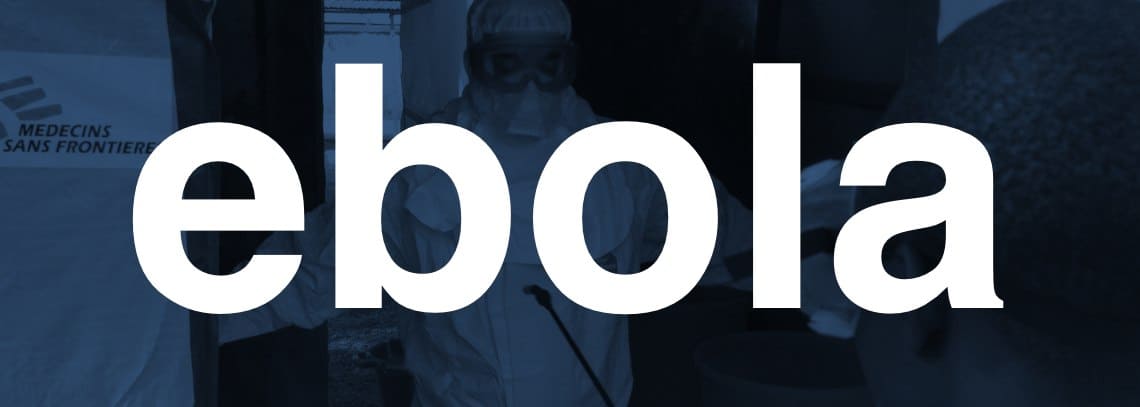Ebola
It’s all over the news. The epidemic continues to spread. There are now cases in London, Paris, New York, Toronto and Manila. Tens of thousands are dead in Africa and most African countries are now affected. Borders are closed and economies are collapsing. This all weighs heavily on your mind as you leave your ICU full of patients with H7N9 influenza to see yet another patient in the emergency department who is very unwell with viral symptoms. It’s not the current influenza epidemic that worries you. That’s manageable, it’s familiar, its… routine. It’s the other epidemic that worries you. Preoccupies you.
You walk into a scene of chaos. There is blood on floor. You’ve seen that plenty of times, but this time it’s different. The look on the ED doctors and nurses faces tells you it’s different. The patient is a young man. He’s hypotensive and has profuse watery diarrhoea. He’s bleeding from line insertion sites and has purpura fulminans. You find out that he presented with a few days of fever and chills with diarrhoea. You also find out that he’s a missionary recently returned from Sierra Leone. Your mind goes into overdrive:
“…ebolaebolaebolaebolaebolaebolaebolaebolaebolaebolaebolaebolaebolaebolaebolaebolaebola…”
This is a scenario that I’m sure you’ve all thought about. I know I have. So it’s time to make sure that you actually know what to do.
Knowledge is power so here’s the ICN guide to Ebola for the intensive care clinician.
Ebola is a single stranded RNA flavovirus.
Together with the closely related Marburg virus, as well as Lassa, yellow fever and dengue haemorrhagic fever, it is a cause of viral haemorrhagic fever.
The first case was documented in 1976 in the Ebola river region of the Democratic Republic of Congo. Four epidemics (and numerous smaller outbreaks) have preceded the current one, 3 in Sudan and one in Uganda.
The current Epidemic began in March 2014 in Guinea and has since spread to Sierra Leone, Liberia and Nigeria.
[/az_box_icon][az_lightbox_image image=”9057″ animation_loading=”yes” animation_loading_effects=”move_right” title=”Ebola Virus”]
[/az_box_icon]
The main reservoir host remains unknown but fruit bats are suspected.
The virus is spread between non-human primates and human consumption of these primates is thought to have introduced the virus to humans.
Transmission is by body fluids. The blood, saliva, faeces, urine or sweat of an infected person must come into contact with the mucus membranes or broken skin of a new host.
Of significant concern to health professionals, airborne transmission is strongly suspected to occur during aerosol generating procedures and a number of small outbreaks amongst health professionals appear to be due to airborne transmission.
Current recommendations are for health professionals treating suspected ebola cases to take contact and airborne precautions.
Two pairs of gloves, an impervious gown, An N-95 mask and eye protection are probably sufficient to prevent transmission.
As you’ve probably seen on the news, Aid workers in Africa are wearing impervious jumpsuits, gumboots, thick gloves, aprons, N-95s and ski-googles. In addition all potential gaps in protective clothing (e.g. cuffs) are covered with masking tape.
Ebola infects a wide variety of cell types and the clinical features result indirectly from the immune response. An exaggerated immune response results in septic shock with vasodilation and capillary leak, and widespread expression of tissue factor leads to a consumptive coagulopathy.
After an incubation period of about 8-10 days (during which the patient isn’t infectious) typical viral symptoms develop
- Fever
- Malaise
- Chills
- Myalgia
- Dry cough
- Headache
These are followed by gastrointestinal symptoms (vomiting, diarrhoea, abdominal cramping) and signs of coagulopathy (petechiae, purpura, bleeding from venepuncture sites and mucosae).
Catastrophic bleeding is less common. The current Guinea strain of Ebola seems not have as many haemorrhagic features as previous outbreaks.
Lab findings are as you would expect in any patient with septic shock and consumptive coagulopathy;
- Elevated Urea and Creatinine
- Transaminitis
- Leukopenia
- Thrombocytopenia
- Elevated PT/INR and APTT
- Low fibrinogen
- Elevated D-Dimer
[/az_box_icon]
Ebola can be detected in blood using ELISA or PCR, however the test is only available at a few specialised reference laboratories.
Otherwise diagnosis is clinical and is based on a history of travel to or contact with someone from an affected area, clinical features and laboratory findings.
Given the vague clinical findings, a high index of suspicion is needed. CDC guidelines suggest that anyone who has been in an affected area in the past 21 days and has clinical features suggestive of Ebola should be considered to be infected and treated appropriately.
In terms of differential diagnosis, the most likely cause of the constellation of symptoms and signs typical of Ebola occurring in returned traveller remains MALARIA (see this full text review article), and this must be ruled out as part of the diagnostic process.
Marburg virus is the closest relative of Ebola and has very similar features. Any other viral haemorrhagic fever, such as dengue or yellow fever will cause viral symptoms and coagulopathy.
Common things remain common though. Plain old gram negative septic shock with DIC, Acute viral hepatitis, HUS/TTP and even snakebite are far more likely diagnoses in the majority of patients outside of sub-saharan Africa.
[/az_box_icon]
As you might expect, management is supportive. Isolation (or cohorting in an epidemic) is mandatory to protect staff and other patients.
Otherwise, all that is needed is standard intensive care of a patient with septic shock and DIC.
Vasopressor support, careful fluid management and administration of blood products are vital.
Experimental drugs have been administered to some victims.
ZMapp is a monoclonal antibody (3 monoclonal antibodies in-fact). The drug has been shown to have a survival benefit in small animal trials but has not undergone a prospective trial in humans. Despite this it has received approval for use in humans and has been used in several cases.
At the time of writing all supplies of ZMapp had been exhausted and more is under production.
Transfusions of blood from Ebola survivors has also been trialled as a form of immunotherapy.
[/az_box_icon]
Bad.
The case fatality rate for the current epidemic is 47%.
However this is an improvement of the case fatality rate for previous Ebola epidemics of 80-90%. Whether this improvement is due to improvements in public health and supportive care, or is a feature of the present strain is unclear. It is also likely that the currently quoted case fatality rate is an underestimate.
Patients who present with evidence of hypovolaemia, impaired gas exchange and severe metabolic abnormalities are likely to do poorly.
Those who survive are likely to show signs of improvement within 2 weeks of developing symptoms.
[/az_box_icon]
- Up to Date have made their Ebola pages free for the duration of the current epidemic – both Epidemiology, Pathogenesis and Clinical Manifestations and Diagnosis and Treatment
- The NEJM has an Ebola page which also seems to be free and has a mixture of scientific reports and commentary
- The CDC has a very comprehensive Ebola page
- The WHO has an Ebola page that has lots of practical tips for health care workers (e.g. putting on and taking off PPE)
- Those of you working in NSW should check out the NSW Health Ebola page
[/az_box_icon]

























